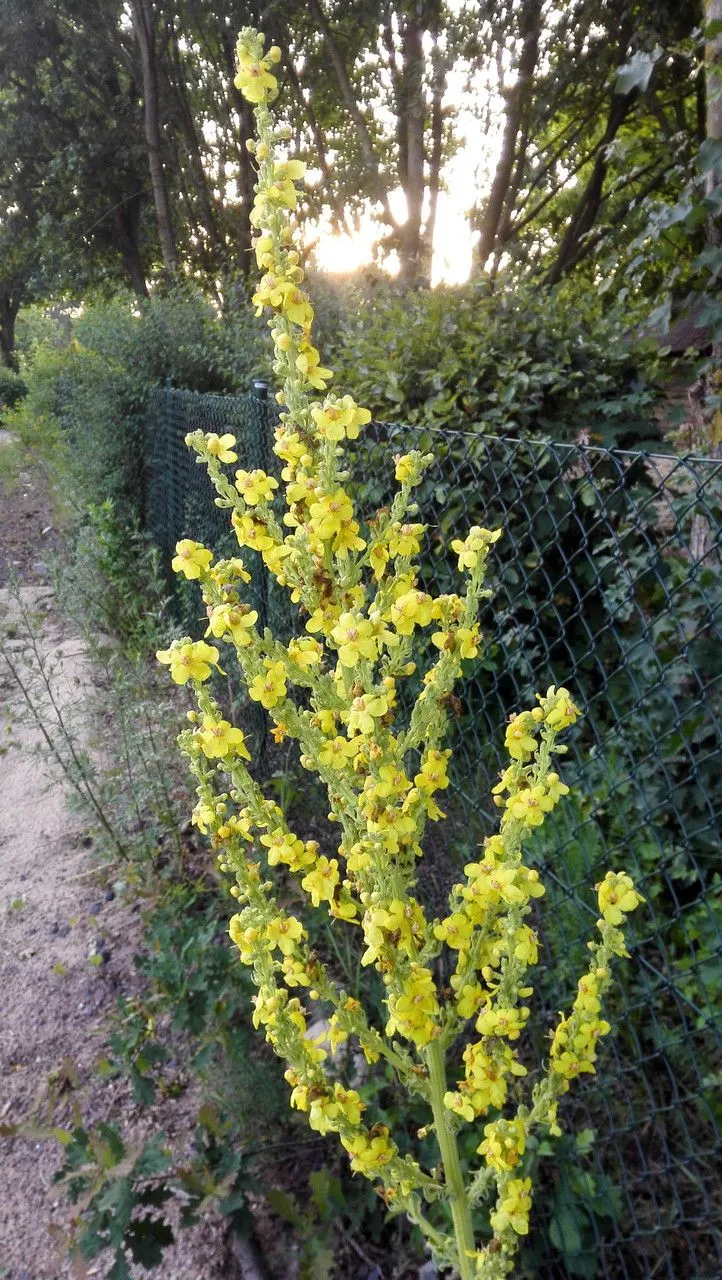
Author: Schrad.
Bibliography: Hort. Gott.: 22 (1809)
Year: 1809
Status: accepted
Rank: species
Genus: Verbascum
Vegetable: False
Observations: EC. & SE. Europe to Iran
Hungarian mullein, known scientifically as Verbascum speciosum, is a striking biennial or perennial plant that belongs to the Scrophulariaceae family. It presents itself with grandeur, exhibiting a height that can often reach impressive proportions. Introduced to the botanical world in 1809 by Schrad., this species continues to showcase its resilience and adaptability across various regions.
The native range of Hungarian mullein extends from Eastern and Southeastern Europe to the vast terrains of Iran. This geographical span emphasizes the plant’s versatile nature, allowing it to thrive in a variety of climatic conditions and terrains. Whether found on rocky slopes, open hillsides, or meadowland clearings, Verbascum speciosum has adapted well to environments that range from temperate to more extreme conditions.
One of the most celebrated features of the Hungarian mullein is its vibrant floral display. The plant produces tall, stately spikes adorned with numerous bright yellow blossoms, each one characterized by a unique combination of intricate patterns and textures. These flowers not only contribute to the aesthetic appeal of the landscape but also attract a plethora of pollinators, including bees and butterflies, thus playing a crucial role in maintaining local biodiversity.
In addition to its ornamental value, Verbascum speciosum possesses various practical uses. Historically, extracts from the plant have been used in traditional medicine, particularly for their expectorant properties. While the use of this plant for medicinal purposes should be approached with caution and preferably under professional guidance, its historical significance cannot be understated.
Furthermore, horticulturists and garden enthusiasts often favor the Hungarian mullein for its relatively low maintenance needs. It is a hardy plant that requires minimal care once established, making it an excellent choice for those looking to enhance their gardens with minimal effort. Its ability to self-seed generously ensures future generations of plants without the need for constant replanting, providing both a steady source of visual enjoyment and contributing to sustainable gardening practices.
In summary, the Hungarian mullein (Verbascum speciosum) stands as a testament to nature’s beauty and resilience. From its notable presence across Eastern Europe to Iran, to its breathtaking blossoms and myriad of uses, this plant continues to capture the interest and admiration of botanists, gardeners, and nature lovers alike.
Eng: hungarian mullein, showy mullein
Dan: kandelaber-kongelys
Deu: prächtige königskerze
Nob: praktkongslys
Nno: praktkongslys
Swe: praktkungsljus, pustantulikukka
Fin: pustantulikukka
Nld: kandelaartoorts
Cym: pannog hwngaria
En: Hungarian mullein, Showy mullein
Da: Kandelaber-kongelys
Nl: Kandelaartoorts
Fi: Pustantulikukka
De: Prächtige Königskerze
Nb: Praktkongslys
Nn: Praktkongslys
Sv: Praktkungsljus, Pustantulikukka
Cy: Pannog Hwngaria
Taken Mar 12, 2022 by Santillán Alejandra (cc-by-sa)
Taken Jun 12, 2022 by Cyrille Claus (cc-by-sa)
Taken Jul 21, 2021 by Phil Scott (cc-by-sa)
Taken Jul 4, 2020 by Angelika Züst (cc-by-sa)
Taken Jun 3, 2018 by Rosa Saez (cc-by-sa)
Taken Jan 1, 1900 by EOL − Encyclopedia of Life (cc-by-nc)
Taken Jan 1, 1900 by EOL − Encyclopedia of Life (cc-by-nc)
Taken Jun 23, 2019 by Sabina Hartmann (cc-by-sa)
Taken Jun 23, 2019 by Sabina Hartmann (cc-by-sa)
Taken Jul 11, 2022 by Julia Sempf (cc-by-sa)
Taken Jun 14, 2022 by Willem Defieuw (cc-by-sa)
Taken Aug 6, 2022 by Francesco Gambineri (cc-by-sa)
Taken May 24, 2014 by Beytullah AYDIN (cc-by-sa)
Taken Jun 28, 2022 by Landeruns Hütte (cc-by-sa)
Taken Jun 23, 2022 by Henning Armin (cc-by-sa)
© copyright of the Board of Trustees of the Royal Botanic Gardens, Kew.
Growth habit>: Forb/herb
Family: Myrtaceae Author: (F.Muell.) K.D.Hill & L.A.S.Johnson Bibliography: Telopea 6: 402 (1995) Year: 1995 Status:…
Family: Rubiaceae Author: Pierre ex A.Froehner Bibliography: Notizbl. Bot. Gart. Berlin-Dahlem 1: 237 (1897) Year:…
Family: Sapindaceae Author: Koidz. Bibliography: J. Coll. Sci. Imp. Univ. Tokyo 32(1): 38 (1911) Year:…
Family: Asteraceae Author: A.Gray Bibliography: Pacif. Railr. Rep.: 107 (1857) Year: 1857 Status: accepted Rank:…
Family: Fabaceae Author: Medik. Bibliography: Vorles. Churpfälz. Phys.-Ökon. Ges. 2: 398 (1787) Year: 1787 Status:…
Family: Aspleniaceae Author: (Cav.) Alston Bibliography: Bull. Misc. Inform. Kew 1932: 309 (1932) Year: 1932…